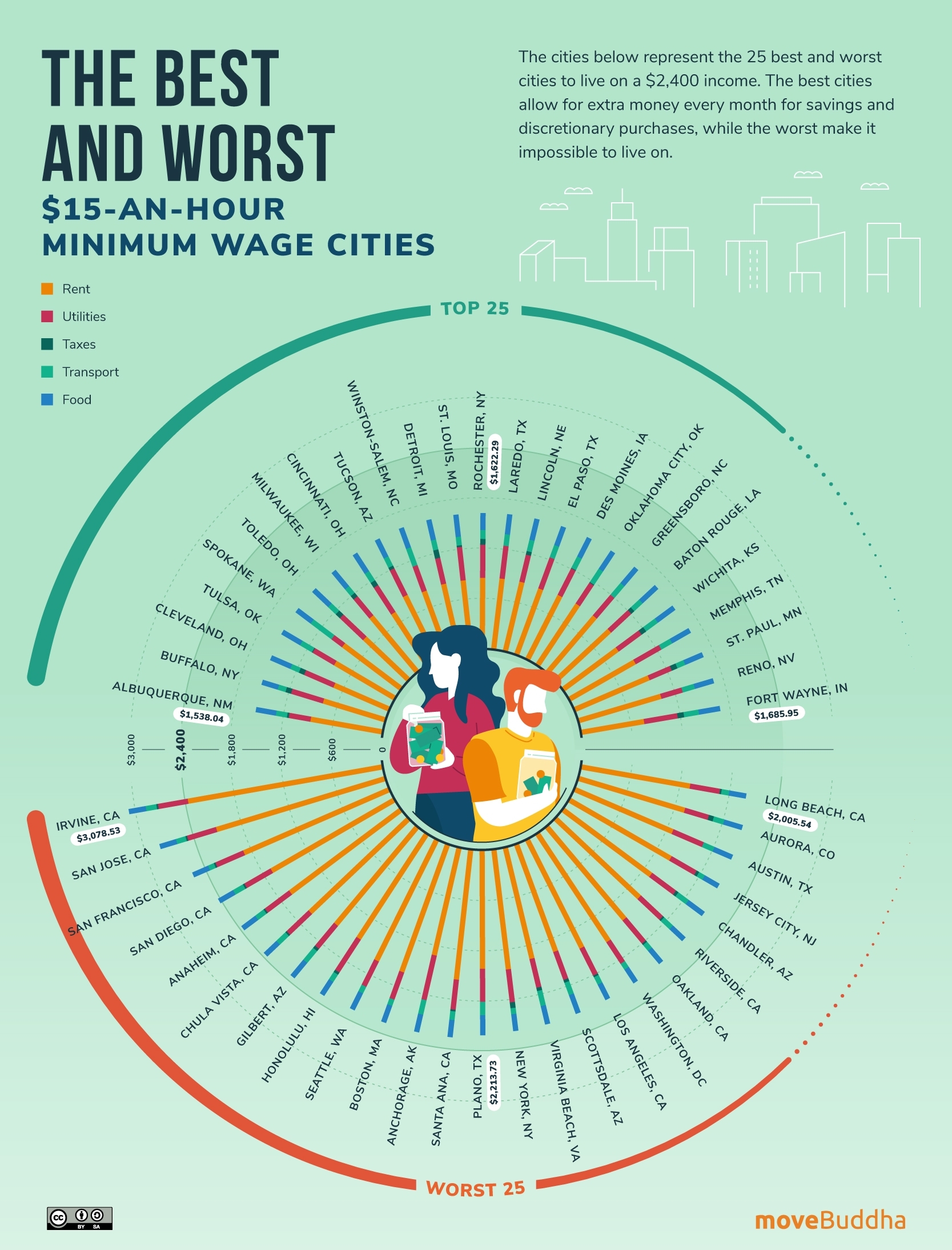Minimum wage debates are never-ending and often polarizing. What I can say with certainty is that the stagnation of the minimum wage for the last 12 years is unfortunate when we see the quick uptick in inflation. In the latest report from June 2021, inflation jumped to 5.4% year-on-year, compared to last year’s rate of 0.6%.
Minimum wages leave even the hardest of workers struggling to make ends meet. The simplest thing that we can do is to advocate for decent, livable wages for all to ensure the opportunity for economic security no matter who you are, where you work or where you live.
That, however, begs the question: how do we set the new minimum wage? In reality, how can we settle on one number, such as $15/hour, when each individual city has dramatically different costs of living and each state has a unique tax burden?
Today’s Wages
Stuck at $7.25, the reality of the federal minimum wage is that in the largest U.S. cities, this kind of wage just won’t cut it. Even $15/hour isn’t enough in most areas.

Some might boast of a news release from the BLS declaring the increase in average hourly earnings rose 3.6% in June 2021, but this is likely not true for every worker and definitely does not keep up with inflation.
It’s a complicated issue but there are many places in America where people aren’t making enough to buy necessities or even pay rent. They opt out of health insurance or simply going to the doctor for fear of what they may owe when all is said and done.
Sure, many states and cities have mandated higher local minimum wages. Unfortunately, those increases often aren’t enough.
For example, New York City’s minimum wage is set at $15-an-hour. According to this data study, factoring in local taxes, utilities, food, rental costs and transit as part of the core budget, a single New Yorker would be left with around $70 for hobbies, insurance, student loan payments, emergency expenses or simply to save. (Case in point: this homeless Amazon worker making $19.30 an hour.)
Inflation and City-Adjusted Wages
One minimum wage movement that has made the most waves across the nation is the Fight for $15. An estimated 26 million workers have been positively impacted by changes made in response to this demand for more livable wages.
This movement was launched 12 years ago. If we used the current rates of inflation that would mean that this movement should now be pushing for $17.75 an hour.
I’m no economist or financial expert, but it seems reasonable to me that taking inflation and each city’s cost-of-living into account, a minimum wage formula could be devised and additional wages could be adjusted according to some city-specific metrics such as the local price parity.
This blog is printed with permission.
About the Author: Kristen Klepac is a writer and content specialist who really misses music festivals. She currently resides in France where she often works on creating data-focused content that reveals unexpected trends on everything from crypto to city-based demographic reports.

